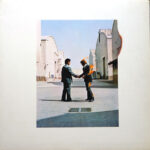Navigating the increasingly wireless world of live music can be a minefield, especially for guitarists relying on wireless systems. Modern stages are saturated with 2.4 and 5GHz signals – from band routers for in-ear monitor (IEM) mixing to venue iPads controlling the sound, not to mention the ubiquitous Wi-Fi networks. While some manufacturers like Shure have expanded to new frequency bands, the fundamental issue of 2.4/5GHz congestion persists. If you’re experiencing dropouts and interference in a controlled environment like your basement, imagine the chaos in a venue packed with countless wireless connections. Proximity to apartment buildings only exacerbates the problem, adding potentially hundreds of competing signals. This is where the choice of your wireless system becomes crucial for a seamless performance.
For guitarists seeking a dependable solution, venturing beyond the crowded 2.4/5GHz bands is a smart move. Systems operating on less congested frequencies offer a significant advantage in maintaining a stable and clear signal. Investing in a robust wireless system is not just about convenience; it’s about ensuring your performance isn’t derailed by technical glitches.
Many guitarists, drawn to the compact form factor and initial freedom of 2.4/5GHz wireless units, often encounter the frustrating reality of dropouts and chirping in real-world scenarios. The allure of a cable-free setup is undeniable, but reliability is paramount when your performance is on the line. While pedalboard-friendly wireless units are incredibly appealing, the susceptibility of 2.4/5GHz systems to interference in crowded wireless environments is a significant drawback. The dream for many is a wireless system in a pedal format that operates outside these congested frequencies, offering both convenience and rock-solid performance.
Choosing the right wireless system is a critical decision for any guitarist serious about their live sound. Exploring options that minimize interference and maximize signal stability is the key to confidently taking the stage, night after night.

